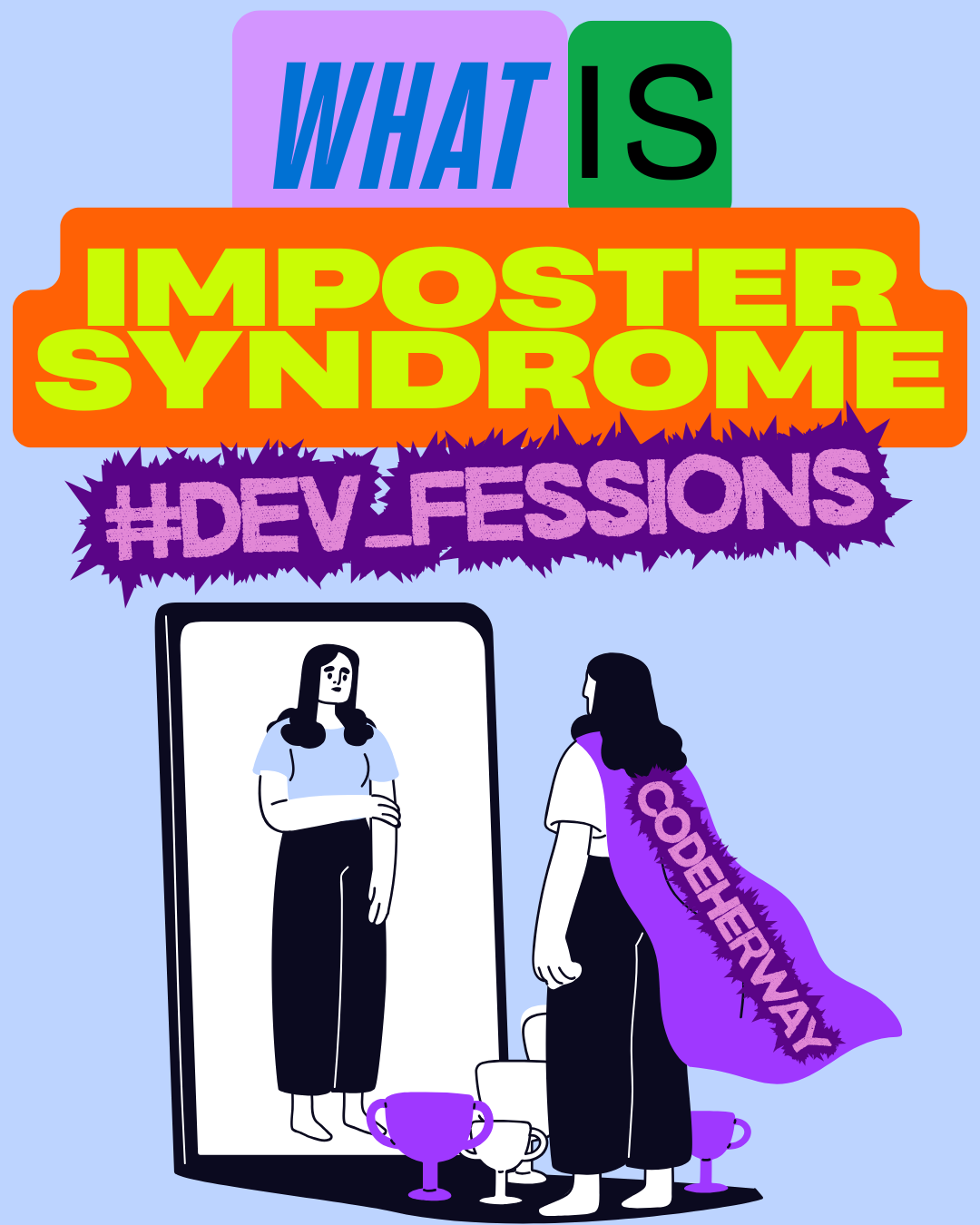What Is Impostor Syndrome?
Asking for a friend. (It’s us. We’re the friend.)
The Quick Define
Impostor syndrome is the ongoing feeling that your success is the result of luck, timing, or other people—and the fear that you’ll be “found out.” It strikes high achievers across industries; in tech, the pace, ambiguity, and comparison culture amplify it. Up to 82% of professionals experience it at some point. You’re not alone—and you’re not broken.
The Psychology (Why Your Brain Does This)
First named by psychologists Pauline Rose Clance and Suzanne Imes (1978), impostor syndrome often appears when capable people set the bar impossibly high and then discount their own wins.
Common drivers
Perfectionism: Moving goalposts; “flawless or failure.”
Attribution bias: Wins = luck; mistakes = proof you’re not enough.
Comparison culture: LinkedIn, GitHub, and conference reels = everyone’s highlight show.
Representation gaps: Fewer visible role models → louder doubt, especially for women and underrepresented folks in tech.
The loop to watch
New challenge → Anxiety → Overwork or Avoid → Short-term relief → “That was luck” → Back to anxiety.
Name it to interrupt it.
Why It Hits Tech So Hard
Constant change: New frameworks and acronyms every quarter.
Ambiguous problems: Rarely one “right” answer.
Public metrics: Stars, followers, dashboards, demos.
Underrepresentation: Fewer examples that look like you = more second-guessing.
How It Shows Up in Your Week
Applications: Skipping roles unless you meet 100% of requirements.
Meetings: Withholding ideas to avoid “sounding dumb.”
Delivery: Over-engineering simple tasks to prove value.
Growth: Dodging stretch projects or promotions you’re ready for.
The Classic Types (Find Your Pattern)
The Perfectionist: If it isn’t flawless, it’s failure.
The Expert: Never enough courses to feel “ready.”
The Soloist: If you didn’t do it alone, it doesn’t count.
The Natural Genius: If it takes effort, you think you’re not talented.
The Superhuman: Worth measured by doing everything at once.
Seven Strategies That Work (Science + Real Life)
1) Acknowledge it—out loud
Why it helps: Naming emotions lowers fear response (amygdala) and recruits rational thinking.
Do this:
Read a primer (e.g., Valerie Young’s work).
Share in safe spaces (Women Who Code, local meetups).
Reframe: If they learned it, I can learn it.
2) Reframe failure as data
Why it helps: Growth mindset turns mistakes into information, not identity.
Do this:
Add “yet”: “I don’t know this yet.”
After each project, log 3 things learned + 1 to improve.
Treat bugs as breadcrumbs, not verdicts.
3) Track and celebrate small wins
Why it helps: Recognizing progress boosts motivation (dopamine) and confidence.
Do this:
Keep a Brag File (kudos, shipped features, solved incidents).
Use a visual tracker (Notion/Trello).
Friday recap: Write three wins—no matter how small.
4) Seek specific feedback (and receive it)
Why it helps: Trusted outside views correct distorted self-perception.
Do this:
Schedule bi-monthly feedback chats.
Ask: “One thing to keep, one thing to improve?”
When praised, practice: “Thank you—I appreciate it.”
5) Mentor to learn faster
Why it helps: Teaching cements knowledge (the protégé effect).
Do this:
Offer peer help; record a short Loom explaining a bug you fixed.
Write a mini tutorial or Dev.to post.
Remember: you only need to be one step ahead.
6) Build your bench
Why it helps: Community buffers anxiety and accelerates resilience.
Do this:
Join women-in-tech communities, meetups, or Discords.
Find an accountability partner for goals and wins.
Curate your feed—follow builders who learn out loud; mute comparison triggers.
7) Schedule learning like work
Why it helps: In tech, nobody knows everything; learners win.
Do this:
Block 1 hour/week for docs, a course, or a tiny build.
Aim for 1% better—small, repeated reps.
Share a weekly “what I learned” post to track growth and inspire others.
Self-Talk Scripts (Copy/Paste)
Before a meeting: “I add value by asking clear questions and sharing what I see.”
When stuck: “I don’t know this yet. My next step is X.”
After praise: “Thank you—here’s what I focused on to make it work.”
When applying: “I meet the core needs and can learn the rest on the job.”
10-Minute Mini Worksheet
Name the trigger: When did doubt spike this week?
Evidence list (2 min): Facts that contradict the doubt.
Reframe to action: Turn one fear into a next step.
Log a win: One thing you shipped, solved, or learned.
Ask one ask: Feedback, pairing, or a resource.
You earned your seat. Keep building—and bring others with you.
CodeHerWay is here for the tools, the real talk, and the hype squad you deserve.
You’ve done hard things to get here. You’ll do harder things from here.
And when that small voice whispers “you don’t belong,” answer with evidence: your work, your effort, your growth.
You belong. Now, let’s build. — CodeHerWay





